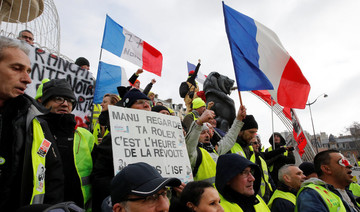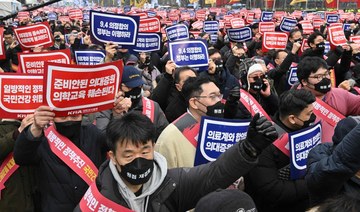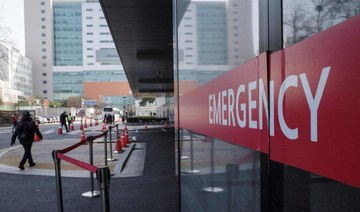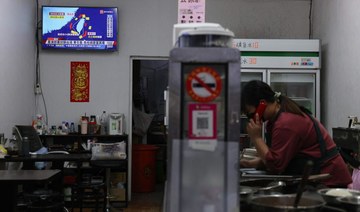PARIS: An ex-boxer who became a hero to some of France’s “yellow vest” protesters after beating up police officers during a demonstration was convicted on Wednesday and given a one-year prison term.
Christophe Dettinger, a former national light-heavyweight champion, was caught on camera on January 5 throwing a flurry of punches at an officer during clashes on a footbridge over the river Seine in Paris.
Dettinger, 37, has been in custody since turning himself in after the attack. He appeared before a packed courtroom Wednesday looking tired, with a thin moustache and his hair cut short.
Ignoring prosecution calls for a significantly heavier sentence, the judge gave Dettinger open-prison terms which would allow him to work during the day.
Footage of the incident, which has been played repeatedly on TV and social media, was shown again in court with Dettinger, who is nearly two meters tall (6 foot 3 inches), seen punching one policeman then kicking another on the ground.
The married father-of-three, who had no previous convictions, apologized for his actions.
“I wanted to stop an injustice but I ended up creating another,” Dettinger told the court.
He expressed remorse for his “mistake” which he said was sparked by anger at the “violence” used against demonstrators.
The yellow vest movement — named after the high-visibility safety vests worn by activists — started over fuel tax hikes and quickly grew into a broader rebellion against the economic policies and leadership style of President Emmanuel Macron.
The number of people taking part in weekly protests has fallen significantly since the start of the year, but the heat has not gone out of the movement, with demonstrations regularly ending in rioting.
“I see police hitting the yellow vests protesters with truncheons — I don’t understand. I see a woman on the ground, someone kicks her and raises a truncheon and that’s when I threw myself at the policeman and hit him,” Dettinger explained calmly on Wednesday.
Despite his apology, the prosecutor called for a three-year sentence, with one year suspended.
Another judge is set to determine the exact terms of the prison sentence next week.
Dettinger also received an 18-month suspended sentence, is banned from visiting Paris for six months and must pay his two victims sums of 2,000 and 3,000 euros ($2,250 and $3,400).
'Angry at repressive police tactics'
Last month’s incident caused widespread outrage, with the government describing it as a prime example of the violence that has characterized the yellow vest protests since they began in November.
One of the officers was treated in hospital for his injuries and both have sued Dettinger.
However, his case has elicited much sympathy among the yellow vests and their supporters, with an online fundraising drive bringing in more than 117,000 euros ($134,000) to cover his legal costs before being shut down.
But the police have also won support, with a fund for injured officers garnering more than a million euros in donations.
Since the start of the protests, 1,796 people have been convicted, mainly for destruction of public property and attacking the police, with hundreds more awaiting trial.
Prime Minister Edouard Philippe told French media on Wednesday there was “no question” of any government amnesty for convicted yellow vest activists.
Six people were arrested Tuesday on suspicion of using a forklift truck to smash open the door to the compound housing the office of government spokesman Benjamin Griveaux — an incident which occurred the same day as Dettinger’s attack on the police.
And on Friday Eric Drouet, a leading yellow-vest figure, will be tried on charges of illegally organizing a demonstration in Paris.
If convicted the 33-year-old truck driver faces up to six months behind bars.
In a video posted on YouTube a day after his outburst, Dettinger described himself as an “ordinary citizen” acting out of anger with what he called the repressive tactics of the police.
Talking in a calm voice in court on Wednesday he said: “I was looking for my wife, I witnessed the truncheon blows on the ‘yellow vests’. Bam, bam, bam. I couldn’t understand it. I saw a woman on the ground... it was then that I threw myself at a policeman and hit him.”
Around 10,000 people took part in a rally in Paris last month to condemn violence by the yellow vest movement.























